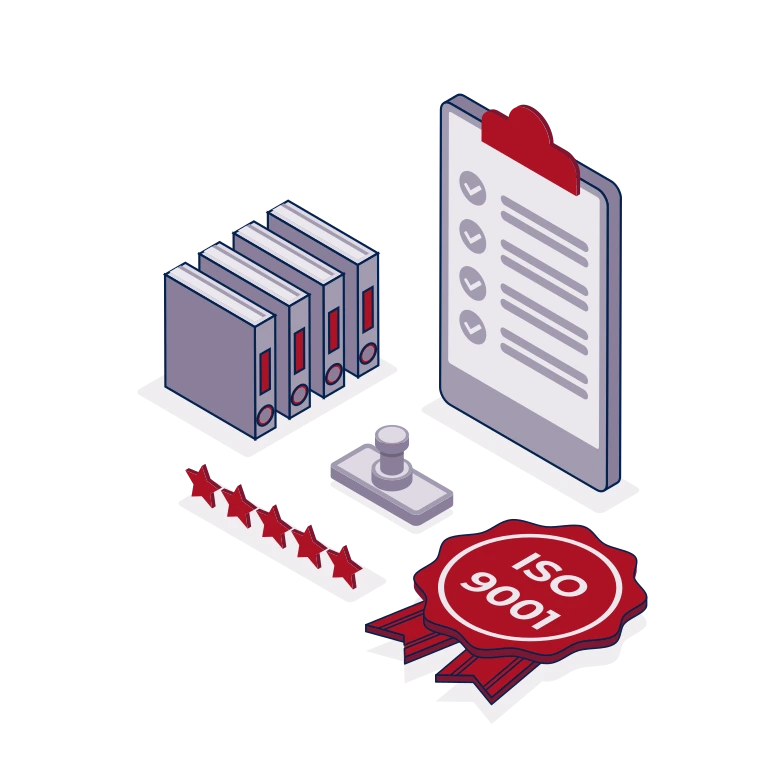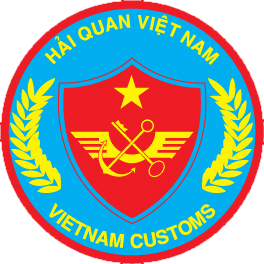Freight Shipping between Vietnam and Finland | Rates – Transit times – Duties and Taxes
Ever tried to make spring rolls with Nordic salmon and been bamboozled by import logistics? Shipping goods between Vietnam and Finland can seem just as complex, with businesses grappling with unfamiliar rates, unanticipated transit times, and tricky customs regulations.
This comprehensive guide offers a detailed walkthrough of the various freight options available - be it by air, sea, or rail - elucidating on customs clearance procedures, duties, taxes, and sharing invaluable, experience-based advice for businesses. From demystifying crucial shipping terms to spotlighting Finland's specific import/export regulations, this guide is your hands-on manual.
If the process still feels overwhelming, let FNM Vietnam handle it for you! Our team of international freight forwarders turn logistical challenges into success stories, simplifying every step of your shipping journey.
Which are the different modes of transportation between Vietnam and Finland?
Understanding the best mode of transport between Vietnam and Finland may feel like untangling a robust fisherman's knot. Vietnam's sultry climate and Finland's icy fjords are separated by nearly 7,800 km, snaking over land and sea. The direct air route is the quickest, like a falcon's swift urbane flight, but also the priciest. Meanwhile, sea routes offer cost-effective, bulk transit equivalent to a tortoise's steady crawl. With over 15 countries, mountain ranges and seas in between, the rail journey may resemble a trudging elephant. The choice then hangs on the scales of time, budget, and cargo specifics.
Need help with your shipment?
Need assistance with your shipment? Dont hesitate to contact us even for a simple question. Choose the option that suits you
Live chat with an expert Chat on WhatsApp Free Quote 24hHow can FNM Vietnam help?

Sea freight between Vietnam and Finland
Ocean shipping between Vietnam and Finland, the backbone of their trade relationship, can be a logistical maze whether you’re a seasoned shipper or a business dipping its toes in international trade. From Cai Mep Thi Vai, Vietnam’s shipyard giant, to Helsinki’s bustling port, your goods navigate thousands of nautical miles. Yet, the cost-effectiveness of sea freight for high-volume goods is unparalleled, despite it taking the scenic rather than the speedy route.
Your pain point? Everything seems easy till you find your container sitting at customs, clearance denied. Avoiding mistakes many businesses make, understanding best practices and staying abreast of specific shipping requirements between these two countries is often trickier than finding a needle in a haystack.
Fear not, this section is your guide, mapping out the do’s and don’ts. From aliases for submission forms to tips on dodging customs hold-ups, we’ll ensure your shipment sails smoothly from Ho Chi Minh to Helsinki. Armed with this guide, your sea freight process can match Finnish efficiency and Vietnamese tenacity.
Main shipping ports in Vietnam
Port of Ho Chi Minh City
Location and Volume: Located in the southern region of Vietnam and in proximity to the economic hub, Ho Chi Minh City, and also known as Saigon Port, this port is the busiest and largest commercial port in Vietnam, handling approximately 10 million TEUs annually.
Key Trading Partners and Strategic Importance: Major trading partners include China, South Korea, and the USA. It’s renowned for its strategic location in the international maritime route, connecting Vietnam to Asia, Europe, and the Americas.
Context for Businesses: If you’re seeking significant connectivity to major markets and a high-capacity port, the Port of Ho Chi Minh City might be a crucial element for your logistics strategy with its strategic location and high traffic handling capabilities.
Port of Hai Phong
Location and Volume: Located on Vietnam’s northeastern coast, it’s the key maritime gateway for the northern region handling about 1,1 million TEUs per year.
Key Trading Partners and Strategic Importance: Frequent trading partners are China, Singapore, and Japan. The port holds strategic importance due to its proximity to Hanoi and its connections to China’s southern region.
Context for Businesses: For businesses planning operations in the northern region of Vietnam or looking to trade with China’s southern region, the Port of Hai Phong will be valuable within your supply chain plan.
Port of Da Nang
Location and Volume: This port is situated centrally on Vietnam’s eastern coast and handles about 800,000 TEUs annually.
Key Trading Partners and Strategic Importance: Key trading partners notably include China, South Korea, and Thailand. The port is strategically important since it serves as the primary commercial port for central Vietnam.
Context for Businesses: If your business requires access to central Vietnam or the countries residing in the Eastern economic corridor, the Port of Da Nang could be instrumental within your logistics framework.
Main shipping ports in Vietnam
Port of Ho Chi Minh City
Location and Volume: Located in the southern region of Vietnam and in proximity to the economic hub, Ho Chi Minh City, and also known as Saigon Port, this port is the busiest and largest commercial port in Vietnam, handling approximately 10 million TEUs annually.
Key Trading Partners and Strategic Importance: Major trading partners include China, South Korea, and the USA. It’s renowned for its strategic location in the international maritime route, connecting Vietnam to Asia, Europe, and the Americas.
Context for Businesses: If you’re seeking significant connectivity to major markets and a high-capacity port, the Port of Ho Chi Minh City might be a crucial element for your logistics strategy with its strategic location and high traffic handling capabilities.
Port of Hai Phong
Location and Volume: Located on Vietnam’s northeastern coast, it’s the key maritime gateway for the northern region handling about 1,1 million TEUs per year.
Key Trading Partners and Strategic Importance: Frequent trading partners are China, Singapore, and Japan. The port holds strategic importance due to its proximity to Hanoi and its connections to China’s southern region.
Context for Businesses: For businesses planning operations in the northern region of Vietnam or looking to trade with China’s southern region, the Port of Hai Phong will be valuable within your supply chain plan.
Port of Da Nang
Location and Volume: This port is situated centrally on Vietnam’s eastern coast and handles about 800,000 TEUs annually.
Key Trading Partners and Strategic Importance: Key trading partners notably include China, South Korea, and Thailand. The port is strategically important since it serves as the primary commercial port for central Vietnam.
Context for Businesses: If your business requires access to central Vietnam or the countries residing in the Eastern economic corridor, the Port of Da Nang could be instrumental within your logistics framework.
Main shipping ports in Finland
Port of Helsinki
Location and Volume: Located on Finland’s southern coast, the Port of Helsinki is a vital hub for goods, notably imports from other EU countries and Russia, with a shipping volume of 15.2 million tonnes in 2022.
Key Trading Partners and Strategic Importance: Major trading partners include Germany, Russia, Sweden, and Estonia. Its geographical positioning makes it strategically important, acting as the leading general port for foreign trade in Finland.
Context for Businesses: If you’re looking to expand your business into northern Europe and Russia, the Port of Helsinki may play a crucial role in your logistics due to its accessibility and solid connections throughout Europe.
Port of Turku
Location and Volume: Located on the southwest coast, the Port of Turku specializes in handling unitized cargo, with a significant shipping volume of around 2.2 million tonnes in 2022.
Key Trading Partners and Strategic Importance: Primary trading partners include Sweden and other Baltic Sea countries. The port’s strategic importance lies in its comprehensive connections to these important trading locations.
Context for Businesses: For businesses focused on trading with Sweden and Baltic countries, Port of Turku could be an essential part of your logistics strategy, given its specialized handling of unitized cargo.
Port of Oulu
Location and Volume: Located in the Gulf of Bothnia, the Port of Oulu is Finland’s leading port for exports, managing a considerable shipping volume of around 3.5 million tonnes annually.
Key Trading Partners and Strategic Importance: Main trading partners include countries in the European Union, as well as Russia. Its strategic importance comes from being northern Scandinavia’s most important logistics hub.
Context for Businesses: If your business has significant exports, particularly in northern Scandinavia, the Port of Oulu, due to its role as a primary export hub, could be a critical component of your logistics strategy.
Port of Kokkola
Location and Volume: Situated on the western coast, the Port of Kokkola is one of Finland’s busiest ports, handling around 7 million tonnes of shipping volume yearly.
Key Trading Partners and Strategic Importance: Main trading partners include EU countries, the United States, and Russia. The port’s strategic importance emanates from its position as Finland’s third-largest port and its expertise in bulk cargoes.
Context for Businesses: If your business deals with bulk cargoes, Port of Kokkola could offer greater efficiency for international shipping, thanks to its specialized handling techniques.
Port of HaminaKotka
Location and Volume: Located on the southeastern coast, the Port of HaminaKotka is Finland’s most significant universal, export, and transit port, handling over 18 million tonnes shipping volume.
Key Trading Partners and Strategic Importance: Major trading partners include Asia, Europe, North America, and the Baltics. Its strategic significance boils down to being Finland’s largest port and its efficient transit to Asia, Europe, and North America.
Context for Businesses: Port of HaminaKotka is an excellent choice for businesses in varied industries, especially those aiming to reach numerous international markets, due to the port’s capabilities as a universal port.
Port of Rauma
Location and Volume: Based on the western coast, the Port of Rauma is Finland’s leading paper and pulp export port, it has around 6 million tonnes of shipping volume per year.
Key Trading Partners and Strategic Importance: Main trading partners include Europe, Asia, and North America. Its strategic importance lies in its role as the country’s principal port for paper and pulp exports and its handling of container and other cargo.
Context for Businesses: The Port of Rauma could be your preferred choice if you’re in the paper and pulp industry, given its specialized facilities and efficient transport connections.
Should I choose FCL or LCL when shipping between Vietnam and Finland?
Are you shipping goods from Vietnam to Finland and debating between Full Container Load (FCL) and Less than Container Load (LCL)? The choice is vital, as it directly impacts your costs, delivery times, and shipping success. This section aims to demystify these two main sea freight options, helping you make a strategic decision customized to your shipping needs. As every business is unique, so is every shipment. Let’s unravel the differences and ensure your freight sails smoothly to its Nordic destination.
Full container load (FCL)
Definition: FCL or Full Container Load refers to a shipping method where you have exclusive use of a 20'ft or 40'ft container for your cargo. The main benefit of FCL shipping revolves around the economy of scale and the security of your goods.
When to Use: FCL is an optimal choice when shipping a high volume of goods, typically more than 13/14/15 cubic meters (CBM). Choosing FCL can provide cost advantages as the fcl shipping quote gets cheaper the more you ship. Additionally, the container remains sealed from origin to destination, increasing the safety of your shipment.
Example: Consider a Finnish furniture manufacturer importing varnishes from Vietnam. If their cargo volume fills more than half a 20'ft container, the fcl container option will not only achieve cost-effectiveness but also provide the safety of having the shipment sealed from origin to destination.
Cost Implications: While the upfront cost of an FCL container might seem high, it becomes cheaper per unit when shipping large volumes. Moreover, you mitigate risks such as damage or loss that can occur with shared containers in LCL shipping, potentially saving costs in the long run.
Less container load (LCL)
Definition: Less than Container Load (LCL) shipping, as the name implies, is a shipment method where your cargo does not fill up an entire container and is consolidated with other shipments.
When to Use: LCL is highly flexible, perfect for low volume shipments, and ideal when your cargo volume is less than 15 CBM. This option allows multiple businesses to share a container, splitting costs and reducing wasted space.
Example: Here's how it works–suppose you're a Finnish company importing Vietnamese silk and your order only occupies 10 CBM of a 40 CBM container. Utilizing LCL shipping, your order is combined with other shipments in the same container, maximizing efficiency.
Cost Implications: Understandably, the LCL shipping quote is calculated based on your cargo's volume. Thus, LCL freight costs may be higher per CBM when compared to Full Container Load (FCL). However, for shipments under 15CBM, you'll likely find LCL to be the more economical choice due to reduced waste and shared costs.
Hassle-free shipping
Shipping from Vietnam to Finland and unsure whether to consolidate or use a full container? Let FNM Vietnam help eliminate the guesswork. As leading freight forwarders, we convert the intricate world of cargo shipping into a hassle-free process. Our ocean freight experts consider factors like cost, time, and cargo type to suggest the best options tailored to you. Interested? Contact us for a free, commitment-free estimate. Your simplified cargo transport experience awaits.
On average, sea freight from Vietnam to Finland can take around 35 to 50 days. The exact transit time may vary depending on several factors such as the specific ports used, the weight, and the type of goods being shipped. For the most accurate estimate, we recommend you reach out to a specialist freight forwarder like FNM Vietnam for a tailored quote.
Sea Freight Transit Times (in Days):
| Finland Ports | Vietnam Ports | Average Transit Time |
| Helsinki | Ho Chi Minh | 47 |
| Helsinki | Hai Phong | 38 |
| Kotka | Ho Chi Minh | 49 |
| Kotka | Hai Phong | 38 |
*Please note, these are the main ports in each country that handle international freight. It is fundamental to stay updated on the shipping schedule as transit times may change.
How much does it cost to ship a container between Vietnam and Finland?
Navigating the complex waters of ocean freight rates, it’s crucial to understand that exact shipping costs per CBM from Vietnam to Finland can widely vary. Influencing factors include Point of Loading, Point of Destination, the selected carrier, nature of goods, and monthly market impositions. Consequently, an exact one-size-fits-all price remains elusive.
However, fear not. At our company, we tailor our services to your unique needs, providing personalized quotes case-by-case. Rest assured, our shipping specialists stand ready to guide you through these oceanic waves, dedicated to securing the best and most cost-effective shipping solution for your business.
Special transportation services
Out of Gauge (OOG) Container
Definition: Out of Gauge (OOG) containers, also known as OOG cargo, are shipping containers designed to carry merchandise that won’t fit within the dimensions of standard containers. They consist of flat rack and open top containers for easy loading and unloading.
Suitable for: Large assemblies, heavy machinery, oversized equipment, or any commodity larger than the typical dimensions of a standard shipping container.
Examples: Industrial machinery parts, construction equipment, oversized pipes or tubes, and helicopters.
Why it might be the best choice for you: If your cargo exceeds the standard measurements, an OOG container ensures efficient and safe transportation without disassembling or altering your goods.
Break Bulk
Definition: Break bulk refers to cargo shipped as individual, separate units rather than being loaded into containers. It requires more handling and preparation than other shipping methods.
Suitable for: Non-containerized goods or those too heavy or too big to fit into containers.
Examples: Timber, steel or iron beams, oversized machinery, and large vehicles.
Why it might be the best choice for you: Break bulk is favorable when dealing with large items that can’t fit into traditional containers or when commodities are required to be shipped as individual units.
Dry Bulk
Definition: Dry bulk pertains to commodities shipped in large, loose quantities without packaging directly loaded into the vessel’s hold.
Suitable for: Loose cargo load including dry commodities that are not packaged separately.
Examples: Grain, coal, cement, fertilizers, and minerals.
Why it might be the best choice for you: If your goods are unpackaged and need to be transported in huge quantities, opting for dry bulk shipment can be cost-efficient and practical.
Roll-on/Roll-off (Ro-Ro)
Definition: Roll-on/Roll-off (Ro-Ro) shipping involves vessels designed to carry wheeled cargo where the vehicle rolls on at the origin and rolls off at the destination – hence the name Ro-Ro vessel.
Suitable for: Any cargo on wheels that can be driven onto the ship, either under its own power or on a mobile platform.
Examples: Cars, trucks, semi-trailer trucks, trailers, and railroad cars.
Why it might be the best choice for you: Ro-Ro is your go-to option for wheeled vehicles or machinery guaranteeing their condition will remain intact during shipment.
Reefer Containers
Definition: Reefer containers are refrigerated shipping containers designed to transport temperature-sensitive goods while maintaining a cold or frozen state during transit.
Suitable for: Perishable goods needing a temperature-controlled environment.
Examples: Fresh fruits, vegetables, dairy products, seafood, and pharmaceuticals.
Why it might be the best choice for you: If you’re shipping perishable goods or pharmaceuticals requiring a specifically maintained temperature, reefer containers ensure the quality of your products upon arrival.
Now that you know the different sea freight shipping options available between Vietnam and Finland, FNM Vietnam can support you in making the apt choice for your specific needs. Reach out to us to receive a free shipping quote in less than 24 hours.
Air freight between Vietnam and Finland
Air freight between Vietnam and Finland? That’s rocketing your valuable cargo halfway around the world with the certainty of sunrise! Embrace the speed demon; it gets your items across continents faster than Usain Bolt does the 100m dash. Imagine luxury timepieces, high-tech electronics, or pharmaceuticals, preciously packed and touch down in Finland before your coffee gets cold. Everything from socks to microchips, if it’s small and pricey, air freight’s your ticket.
Yet, the fast lane isn’t a magic carpet ride. Many shippers trip over their own feet, missing a beat when calculating costs. Picture this: Overlooking the weighty influence of volumetric pricing could inflate your bill faster than a hot air balloon. That’s just one of the crucial best practices often left in the dust. Without robust know-how, air freight complexities can unfold like a minefield, drilling unnecessary holes in your pocket. Stay tuned, and we’ll peel back the curtain on these hidden pitfalls.
Air Cargo vs Express Air Freight: How should I ship?
Want to swiftly get your goods from Vietnam to Finland? You’ll hit a fork in the road: Air Cargo or Express Air Freight. Think of Air Cargo like hitching a ride in a shared airline, while Express Air Freight is reserving your own private jet. Don’t fret, we’re here to slice through the jargon and help you identify the perfect option tailored to your business requirements. Let’s dive in!
Should I choose Air Cargo between Vietnam and Finland?
Navigating Air cargo between Vietnam and Finland is cost-effective and reliable for heavier shipments. For instance, airlines like Finnair and Vietnam Airlines, offer trustworthy freight services. Remember, larger cargo loads (100/150kg or 220/330 lbs) make airfreight even more attractive.
However, this might require more planning due to the fixed schedules leading to longer transit times. But if your budget allows and your shipment is on the weighty side, this could be your perfect shipping solution.

Should I choose Express Air Freight between Vietnam and Finland?
Express air freight, defined as a specialized service using exclusive cargo planes without passengers, is an excellent choice for shipments under 1 CBM or 220/330 lbs of cargo. Imagine rapidly dispatching your goods with renowned services like FedEx, UPS, or DHL and safeguarding their fast delivery. You’ll experience fewer delays and potentially avoid unnecessary customs clearance headaches. If your shipment size fits, going express can be a speedy, reliable solution for your Vietnam-Finland shipping needs.

Main international airports in Vietnam
Tan Son Nhat International Airport
Cargo Volume: Tan Son Nhat handled over 1.4 million tonnes of cargo in 2019, making it the busiest freight hub in the country.
Key Trading Partners: The United States, China, Japan, South Korea, and Taiwan are amongst the airport’s top trading partners.
Strategic Importance: As Vietnam’s largest airport, Tan Son Nhat connects the commercial hub of Ho Chi Minh City to the world, making it crucial for both imports and exports.
Notable Features: The airport boasts two parallel runways capable of handling wide-body aircraft, and is undergoing an upgrade to expand its cargo-handling capacity.
For Your Business: If your business primarily deals with partners in southern Vietnam, particularly Ho Chi Minh City, Tan Son Nhat offers efficient access and rapid cargo handling services.
Nội Bài International Airport
Cargo Volume: Nội Bài processed approximately 700,000 tonnes of cargo in 2019.
Key Trading Partners: The United States, China, and other Southeast Asian countries are significant trading partners.
Strategic Importance: As the main airport serving the capital, Hanoi, and the northern regions, Nội Bài is a key logistics hub for businesses operating in these areas.
Notable Features: A new terminal and cargo handling area were completed in 2015 as part of a broad modernization effort. The airport is capable of handling large freighter aircraft.
For Your Business: Nội Bài’s modern facilities and connections to key global markets make it an attractive gateway for businesses shipping goods to and from northern Vietnam.
Đà Nẵng International Airport
Cargo Volume: Đà Nẵng handled approximately 50,000 tonnes of cargo in 2019.
Key Trading Partners: China, Japan, South Korea, and the United States are major trading partners.
Strategic Importance: This airport is strategically important due to its central location in Vietnam, which bridges the gap between northern and southern logistics networks.
Notable Features: Đà Nẵng airport features all-weather operation facilities, a separate cargo terminal, and can accommodate wide-bodied, long-haul aircraft.
For Your Business: The location of Đà Nẵng allows it to serve as an alternate or secondary hub for businesses seeking to distribute goods throughout Vietnam.
Cần Thơ International Airport
Cargo Volume: Shipped approximately 18,500 tonnes of cargo in 2019.
Key Trading Partners: Important trading partners include Thailand, Malaysia, South Korea and China.
Strategic Importance: Serving the south-west and Mekong Delta regions, this airport is situated in an agricultural-rich area known for exporting produce.
Notable Features: Expansion plans are underway to position this airport as a significant player in regional air freight.
For Your Business: If your business deals with perishable goods, particularly fruits and vegetables, Cần Thơ International Airport provides direct access to the key agricultural region of Vietnam.
Phú Quốc International Airport
Cargo Volume: This island-based airport handled 20,000 tonnes of cargo in 2019.
Key Trading Partners: Critical trade partners are other Southeast Asian countries.
Strategic Importance: Located on an island off the southwest coast, Phú Quốc serves as a logistical launching point for sea-air multimodal freight transport.
Notable Features: Despite its smaller size, the airport can accommodate wide-bodied, long-haul aircraft.
For Your Business: Should your business strategy incorporate sea-air multimodal transportation, Phú Quốc International Airport may offer strategic advantages.
Main international airports in Finland
Helsinki Airport
Cargo Volume: Annually, the airport handles approximately 200,000 tons of cargo.
Key Trading Partners: The airport chiefly connects with trading partners in Europe, Asia, and North America.
Strategic Importance: Helsinki Airport is the largest cargo airport in Finland and a significant northern European hub. Its geographical location offers the shortest route between Europe and Asia, which could be advantageous for your shipping needs.
Notable Features: The airport is equipped with modern facilities to handle various types of cargo, including special cargo like perishables, pharmaceuticals, and live animals. The punctuality and reliability of its operations make it a reliable choice.
For Your Business: Its wide connectivity and ability to handle diverse cargo make Helsinki Airport an ideal choice if you’re shipping a range of goods or if your key markets are in Europe, Asia, or North America.
Oulu Airport
Cargo Volume: The airport handles around 22,000 tons of cargo annually.
Key Trading Partners: Its primary trading partners include European countries, especially within the Nordic region.
Strategic Importance: Oulu Airport serves as a prime logistic center for Northern Finland, catering to a broad spectrum of industries such as electronics and machinery.
Notable Features: The airport boasts an efficient transport infrastructure that connects with other modes such as roads and seaports, which could streamline your multi-modal shipping plans.
For Your Business: If your business lies in the electronics or machinery industry and your primary market is within Europe, the Oulu Airport could present an effective shipping solution.
Turku Airport
Cargo Volume: One of the leading cargo airports in the country, Turku Airport processes approximately 55,000 tons of goods each year.
Key Trading Partners: The airport routinely engages in trade with European and Asian countries.
Strategic Importance: Located in Southwest Finland, this airport is a primary gateway for goods transported to and from Scandinavia. It also provides a seamless connection to the Turku harbor, enabling efficient sea freight services.
Notable Features: Turku Airport boasts excellent cold-chain facilities, making it a good match if you’re trying to ship temperature-sensitive goods.
For Your Business: If your shipping needs include temperature-controlled items or if Scandinavia is a substantial market for your business, Turku Airport could be an appropriate choice for your strategy.
Vaasa Airport
Cargo Volume: Vaasa Airport currently handles over 12,000 tons of freight per year.
Key Trading Partners: Main trading partners for the airport consist of European countries, particularly those in the Nordic and Baltic regions.
Strategic Importance: Its strategic location in Western Finland makes it a central point for freight ship services, particularly for the energy technology sector.
Notable Features: With 24/7 operations and excellent security systems, Vaasa Airport ensures timely and safe delivery of your cargo.
For Your Business: The airport’s strong focus on the energy technology sector and robust freight services make it a desirable option if your business falls into this industry or primarily caters to Nordic and Baltic regions.
How long does air freight take between Vietnam and Finland?
Shipping your goods via air freight from Vietnam to Finland typically takes an average of 5-7 days. However, the exact duration could fluctify depending upon factors like the specific airports involved, the weight of your cargo, and the nature of the goods being transported. For the most precise transit times tailored to your specific requirements, confer with an experienced and trusted freight forwarder like FNM Vietnam.
How much does it cost to ship a parcel between Vietnam and Finland with air freight?
Typically, the average rate for shipping a kilogram of air freight between Vietnam and Finland varies between a broad range, closely impacted by elements such as proximity to departure and arrival airports, dimensions, weight, and type of goods. It’s essential to grasp that no ‘one-size-fits-all’ price exists in air freight. Hence, our dedicated team takes a personalized approach to every quote, considering your specific circumstances to ensure the most competitive rates. Rest assured, we’re committed to delivering value-driven services tailored to your needs.
Don’t hesitate! Contact us and receive a free quote in less than 24 hours.
What is the difference between volumetric and gross weight?
In simple terms, gross weight refers to the entire weight of your shipment, including packaging. Volumetric weight, often called dimensional weight, represents the amount of space your parcel occupies in relation to its weight.
Air Cargo circles calculate the volumetric weight by the following equation: Length(cm) x Width(cm) x Height(cm) / 6000. In Express Air Freight, the calculation alters slightly to Length(cm) x Width(cm) x Height(cm) / 5000.
Consider you have a box with dimensions 50cm x 50cm x 50cm, and it weighs 40kg. In Air Cargo, the volumetric weight would be 50 x 50 x 50 / 6000 = 20.8kg (approx 46lbs). For Express Air Freight, it’s 50 x 50 x 50 / 5000 = 25kg (approx 55lbs).
While the gross weight is 40kg (approx 88lbs), freight charges hinge on the higher weight of the two. Knowing the difference helps save on costs, especially when shipping light, bulky items. It helps you choose the most cost-effective packaging and delivery option.
Rail freight between Vietnam and Finland
Why did the shipping container go to school? Because it couldn’t figure out the route from Vietnam to Finland! Now, let’s hop onto the historical train ride between these countries. The remarkable rail line, established in the late 20th century, winds its way beyond simply Vietnam and Finland, connecting countries in-between, like Russia.
From electronics to textiles, the rail route has facilitated the transportation of diverse goods, fostering a powerful trade relationship that benefits both Finland’s and Vietnam’s economies. While rail freight offers a more affordable option compared to air freight, it does involve a longer transit time.
Customs procedures along this route are quite standardized. However, language barriers and complex documentation might pose challenges. Hence, it’s time you fathom whether rail freight suits your specific shipping needs, factoring in cost-effectiveness, transit times, and potential hurdles. An exciting journey of possibility awaits!
What are the main train stations between Vietnam and Finland?
Starting your freight journey in Vietnam, you would begin at one of these major train stations:
1. Hanoi Railway Station:
Serving as a crucial connection point for Vietnam’s North-South Railway line, it’s the largest train station in the country. The station can support substantial cargo volumes, making it an excellent hub for businesses wishing to move goods to Finland. Most notably, Hanoi Railway Station is equipped to handle a wide range of goods, like electronics, textiles, and manufactured products.
2. Ho Chi Minh City Station:
Located in Vietnam’s bustling commercial hub, this station serves as a critical endpoint for the North-South Railway line. The diverse range of goods it can handle plus its strategic location makes it conducive for businesses with multiple sourcing locations.
3. Da Nang Railway Station:
This is a crucial station due to its location in the central region of Vietnam, serving both the northern and southern parts. Being one of the busiest train stations in Vietnam, its cargo volume is impressive, making it ideal for your business if you’re targeting larger shipments.
In transit, you might also want to consider:
1. Beijing West Railway Station, China:
This station is a key component of China’s international rail network. With millions of Tons of cargo volume annually, your goods could comfortably fit onto trains dealing with various types of cargo.
2. Chengdu Railway Station, China:
Known for handling goods towards Europe, Chengdu allows easy access for freight from Southeast Asia. Its strategic location makes it a worthwhile consideration for your shipping strategy.
What are the main train stations between Vietnam and Finland?
Starting your freight journey in Vietnam, you would begin at one of these major train stations:
1. Hanoi Railway Station:
Serving as a crucial connection point for Vietnam’s North-South Railway line, it’s the largest train station in the country. The station can support substantial cargo volumes, making it an excellent hub for businesses wishing to move goods to Finland. Most notably, Hanoi Railway Station is equipped to handle a wide range of goods, like electronics, textiles, and manufactured products.
2. Ho Chi Minh City Station:
Located in Vietnam’s bustling commercial hub, this station serves as a critical endpoint for the North-South Railway line. The diverse range of goods it can handle plus its strategic location makes it conducive for businesses with multiple sourcing locations.
3. Da Nang Railway Station:
This is a crucial station due to its location in the central region of Vietnam, serving both the northern and southern parts. Being one of the busiest train stations in Vietnam, its cargo volume is impressive, making it ideal for your business if you’re targeting larger shipments.
In transit, you might also want to consider:
1. Beijing West Railway Station, China:
This station is a key component of China’s international rail network. With millions of Tons of cargo volume annually, your goods could comfortably fit onto trains dealing with various types of cargo.
2. Chengdu Railway Station, China:
Known for handling goods towards Europe, Chengdu allows easy access for freight from Southeast Asia. Its strategic location makes it a worthwhile consideration for your shipping strategy.
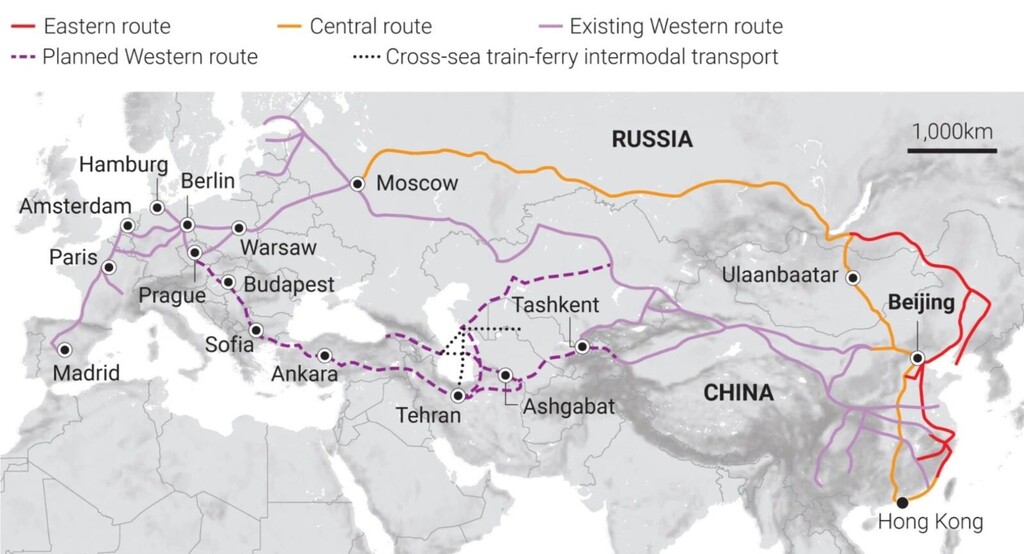
How long does rail freight take between Vietnam and Finland?
Moving goods between Vietnam and Finland via rail freight can range significantly in time. Factors affecting transit include the route taken, customs clearance times, and environmental conditions. On average, expect a transit of about 20-30 days. We have compiled a list of rail networks linking Asia and Europe with their approximate transit times and frequency of departures. Bare in mind, these are estimates as transit times can be unpredictable due to multiple variables.
- Zhengzhou to Hamburg (Germany): ~ 15-17 days, Departs Daily
- Zhengzhou to Munich (Germany): ~ 17-18 days, Departs Monday and Friday
- Zhengzhou to Liege (Belgium)/Milan (Italy): ~ 20 days, Departs Monday, Thursday and Friday
- Chongqing to Duisburg (Germany): ~ 16-17 days, Departs Monday/Friday
- Yiwu to Hamburg (Germany): ~ 16-18 days, Departs Monday/Thursday/Friday
- Yiwu to Duisburg (Germany): ~ 16-18 days, Departs Monday/Thursday/Friday
- Yiwu to Madrid (Spain): ~ 20 days, Departs Monday/Thursday/Friday
- Wuhan to Hamburg (Germany): ~ 17-19 days, Departs Saturday/Wednesday/Thursday
- Wuhan to Duisburg (Germany): ~ 17-19 days, Departs Saturday/Wednesday/Thursday
- Chengdu to Tilburg (Netherlands): ~ 18 days, Departs Wednesday/Sundayy
- Suzhou to Hamburg (Germany): ~ 18-20 days, Departs Sunday
- Suzhou to Duisburg (Germany): ~ 18-20 days, Departs Sunday
- Xi’an to Duisburg (Germany): ~ 18-20 days, Departs Wednesday/Thursday/Friday/Saturday
What are the advantages of rail transport between Vietnam and Finland
Rail transport strikes an effective balance between cost and speed when moving goods from Vietnam to Finland. Unlike air freight, rail offers a more economical solution, making it an attractive option if you’re budget conscious. For instance, shipping machinery parts or chunky furniture pieces won’t put a massive dent in your wallet as it might with air freight. It’s also faster than sea freight, ensuring your products arrive in a timely manner, without the lengthy waiting times associated with maritime transport.
Picture this: your new product line, perhaps artisan Vietnamese coffee beans, could be hitting Finnish shelves in weeks, not months, offering a competitive edge. Thus, rail freight bridges the gap offering the perks of both air and sea without the extreme drawbacks. By choosing this path, you’re investing in a solution that values both your time and budget.
How much does shipping goods by train between Vietnam and Finland cost?
Pinning down a general cost for rail freight between Vietnam and Finland? That’s a tricky one. While air and sea freight have their predictable expenses, rail freight involves a mix of variables – from shipment weight to seasonal shifts, transit times to fuel costs. Therefore, providing you with a costume-made quotation is our best approach.
Be assured, our dedicated team is eager to help you achieve premium value for your logistics expenses. We’ll analyze the specifics of your shipment and provide a quote tailored just for you, in less than 24 hours. So, why wait? Contact us to receive your free quote today!

Door to door between Vietnam and Finland
Unraveling the secrets of Door to Door shipping, it’s your ultimate solution for hassle-free transportation from bustling Vietnam to serene Finland. Imagine enjoying streamlined logistics, one provider, and no stress handling transits. Sounds like a sweet deal, right? Well, this is just the tip of the iceberg. Let’s dive in and reveal the full spectrum of benefits it offers.
Overview – Door to Door
Shipping between Vietnam and Finland feeling complex? With door-to-door shipping, escape the hassles as we handle everything from origin to destination.
Enjoy rapid transit times, easy customs clearance, and less paperwork. However, costs might run slightly higher than traditional shipping and you may have to deal with minor delays. Despite these challenges, it remains FNM Vietnam’s top service, ensuring your delivery is convenient and worry-free.
This stress-free logistics solution is your ticket to confident global trading. Ready to make your shipping process smoother?
Why should I use a Door to Door service between Vietnam and Finland?
Banish those logistics nightmares! Here are five compelling reasons why Door-to-Door service is your go-to option for shipping goods from Vietnam to Finland.
1. Eliminates stress: This service is your one-stop solution for all logistics needs. Right from collecting your goods from your doorstep in Vietnam to delivering it at the final destination in Finland, everything is handled by the service provider.
2. Ensures timely delivery: Urgent consignment? No problem! With Door-to-Door service, you won’t have to worry about separate pickup and delivery schedules. The service provider commits to a timeline making it perfect for those time-critical deliveries.
3. Provides specialized care: If your cargo is complex or fragile, the Door-to-Door service takes extra precautions. Your shipment will be handled with extreme care throughout the entire journey.
4. Ease of clearance: No more grappling with complicated customs rules! The service provider will handle all clearance processes at both ends, ensuring compliance and prompt delivery.
5. Ultimate convenience: Your cargo gets trucked all the way to Finland without you having to lift a finger. Trust me, it’s as convenient as it sounds!
In essence, Door-to-Door service between Vietnam and Finland turns the gauntlet of international shipping into a walk in the park. Isn’t that just wonderful? So, go on, give your logistic fears a vacation!
FNM Vietnam – Door to Door specialist between Vietnam and Finland
Shipping from Vietnam to Finland? Leave it to FNM Vietnam. We offer a comprehensive, hassle-free door-to-door service. From packing your goods to managing all necessary transport, customs procedures, and shipping methods – we handle it all. Don’t sweat the logistics. With our skilled team and a dedicated Account Executive, you can focus on your business.
Get a free estimate in less than 24 hours or speak to our consultants for free. Trust us with your shipping needs and rest easy knowing that you’re in capable hands.
Customs clearance in Finland for goods imported from Vietnam
Customs clearance, the essential process of getting goods past international borders, can be a labyrinth in Finland, especially for goods imported from Vietnam.
With potential minefields such as unexpected fees and intricate paperwork, it’s crucial to understand the ins and outs of duties, taxes, quotas, and licenses. Misunderstandings here can lead to goods marooned in customs, an outcome no business wants. We’ll explore this complex process in the following sections. Promisingly, FNM Vietnam is always on hand to help with any aspect of this process, for any type of goods.
To secure a project estimate, reach out to our team with the origin, value, and HS Code of your goods – essential steps towards a smooth customs experience.
How to calculate duties & taxes when importing from Vietnam to Finland?
Calculating duties and taxes for imports from Vietnam to Finland requires a keen understanding of several key elements. The customs value, harmonized system (HS) code, country of origin, applicable tariff rate, and potential inclusion of additional fees and taxes all play a role in this complex computation.
As the first step of this process, it’s vital to identify the country where your goods were manufactured or produced. This factor is critical since it significantly influences the application of customs duties and tariffs in the shipping equation. Proper identification and classification of your goods lay a solid foundation for accurately calculating your import expenses, helping you avoid any hidden surprises.
Step 1 – Identify the Country of Origin
Ready to import goods from Vietnam to Finland? Don’t rush, start by identifying your product’s country of origin. Why, you ask? Let’s get into it.
1. Trade agreements play a crucial part. With the EU-Vietnam Free Trade Agreement, your goods could be eligible for lower tariffs!
2. Goods must meet certain national ‘originating’ criteria to qualify for these lower tariffs – recognise that!
3. The correct labelling of the country of origin helps customers know where their items were originally manufactured.
4. You might face fines for incorrect documents. Remember, falsification is easily detectable, and honesty saves potential legal trouble!
5. Beware of import restrictions! Some products may face additional constraints based on the country of origin.
Now comes the fun part – your product’s Harmonized System (HS) code. After identifying the country of origin, find your product’s HS code. It not only identifies the product but also the customs duties you’re liable for. Rest easy, our guide will take you step by step – making international shipping as simple as sending a postcard!
Remember, proper planning prevents problems. Go ahead, chart your global journey with us today.
Step 2 – Find the HS Code of your product
Understanding what a Harmonized System, or HS, code is and how to accurately find it is vital to your shipping process. The HS code is a universal economic language and codification for goods. It’s a unique numeric code given to each product that is imported or exported, which helps in identifying the nature of the goods in the customs declaration.
Typically, your supplier will be well-versed with the HS code relevant to what they’re exporting. It’s astute to ask them for it. However, if that isn’t an option, you can resort to finding it on your own, and we’re here to guide you through that process.
To find your respective HS code, visit the Harmonized Tariff Schedule. Your journey to discovery is as easy as typing the name of your product in the search bar. In the Heading/Subheading column of the results, you’ll locate your HS code.
A word of caution: ensure utmost accuracy when selecting an HS code for your goods. Even a small discrepancy can lead to shipping delays, potential fines, or seizure at the border due to non-compliance.
Here’s an infographic showing you how to read an HS code. Remember, gaining proficiency in this area will serve to streamline your international shipping endeavour, making it a more efficient and hassle-free experience.
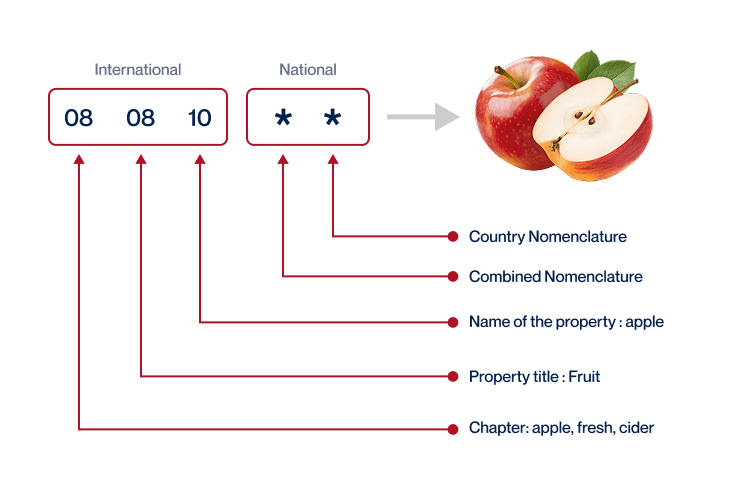
Step 3 – Calculate the Customs Value
Diving straight into it, the Customs Value determines the amount of import duty you will owe. It’s quite different from your goods’ market value; it’s based on the Cost, Insurance, and Freight (CIF) approach.
The formula is simple; Your Goods’ Price (as per the commercial invoice) + International Shipping Cost + Insurance Cost = Customs Value.
Picture this: if your goods cost $10,000 with $1,000 for shipping and $200 insurance, your customs value is $11,200.
This Customs Value helps Finnish customs authorities determine the exact amount you will need to pay for your imports from Vietnam. Making a correct calculation is all about avoiding unnecessary surprises, ensuring you stay within your budget, and keeping your supply chain moving effectively. Remember, all the best importers prioritize getting this right!
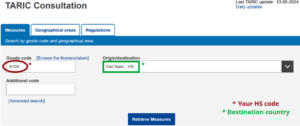
Step 5 – Consider other Import Duties and Taxes
Beyond standard tariffs, sometimes you’ll encounter additional import charges when bringing goods from Vietnam to Finland. Let’s elaborate on these.
Excise duty applies to specific products such as tobacco, alcohol, and certain fuels. Let’s say, for instance, that you’re importing premium cigars with a value of $5,000. An excise duty of around 30% means you’d owe $1,500 in excise duties.
Anti-dumping taxes come into play when goods are sold below their actual cost or fair market price. If you’re importing Vietnamese steel, for example, and if it’s found to be ‘dumped’, you might be hit with an anti-dumping tax, which can sometimes run as high as 60%.
Arguably, the main import cost you’ll need to factor in is Value-Added Tax (VAT). In Finland, the standard VAT rate is 24%. On a shipment worth $10,000, VAT could be as much as $2,400.
Remember, these are hypothetical examples; actual rates may vary, and not all goods are subject to every type of duty or tax. Be sure to contact a customs officer or a trained professional for accurate figures relevant to your specific situation.
Step 6 – Calculate the Customs Duties
Calculating customs duties can be a complex task due to the various elements involved. In Finland, the calculation generally comprises the customs value of your goods, Value Added Tax (VAT), and potentially, anti-dumping taxes and Excise Duty.
Firstly, consider a scenario where you have only customs duties but no VAT. Suppose your goods’ customs value from Vietnam to Finland is $10,000 and the customs duty rate is 5%. Here, your customs duty will be $500.
Next, let’s imagine your goods have both customs duties and VAT. If the VAT rate is 24%, applied to the sum of the customs value and customs duties ($10,500), you’re looking at a VAT of $2,520, with your final cost reaching $13,020.
Lastly, for goods with customs duties, VAT, anti-dumping taxes, and Excise Duty, you’ll need to add these additional taxes to the total. If you have $200 in anti-dumping taxes and $300 in Excise Duty, your total cost rises to $13,520.
Keep in mind, these calculations may vary based on specific goods or special situations. This is where FNM Vietnam customs clearance services come into play. We ensure all steps of your customs clearance are handled professionally so that you’re not overcharged. Get in touch with us for a free quote within less than 24 hours. We’re here to make your international business simple and hassle-free.
Does FNM Vietnam charge customs fees?
As a seasoned customs broker, FNM Vietnam handles the intricate customs clearance process, charging a fee for this service.
However, it’s vital to distinguish these fees from customs duties and taxes; those aren’t pocketed by FNM but rather, go directly to the government. FNM guarantees transparency by supplying official documents from the customs office, ensuring you only pay mandated fees. Imagine a receipt after a grocery run; it breaks down your costs clearly. Similarly, these documents detail all customs-related charges, providing clarity and peace of mind.
Contact Details for Customs Authorities
Vietnam Customs
Official name: General Department of Vietnam Customs Official website: http://www.customs.gov.vn/
Finland Customs
Official name: Finnish Customs (Tulli) Official website: https://tulli.fi/en
Required documents for customs clearance
Untangling the web of documents for customs clearance can be a daunting task. Rest assured, we’re here to help unmask the complexities. Get ready to delve deeper into the Bill of Lading, Packing List, Certificate of Origin, and crucial Documents of Conformity (CE standard). Prepare to simplify your shipping journey!
Bill of Lading
Shipping your goods from Vietnam to Finland? You’ll need a Bill of Lading. This crucial document acts as your ownership ticket, marking that all-important handoff from sender to receiver. But here’s a tip: opt for an electronic – or ‘telex’ – release. Why? It snappily speeds up the process, saves paper, and eliminates the risk of losing the document. Simple, secure, sustainable.
Love it! Don’t forget, if you’re sending cargo through the wild blue yonder, the Air Waybill (AWB) flexes its muscles in the same way. So whether it’s designer furniture or a batch of electronics, always have your Bill of Lading or AWB locked and loaded. It’s a small step that paves a smoother customs journey.
And remember, every successful shipment starts with impeccable paperwork. Happy shipping!
Packing List
For any business shipping goods from Vietnam to Finland, or vice versa, the Packing List is a vital document.
Picture this: a batch of high-end electronics is crossing seas, and without an accurate Packing List, it’s like embarking on a journey without a map. Customs officers require this document for both sea and air freight to detail the exact nature, quantity, and weight of the goods.
This isn’t just for record-keeping. It aids in assessing applicable duties and ensures legal compliance, skipping which can lead to unnecessary delays and fines. So, when creating your Packing List, double and triple-check it. No detail is too small, and accuracy here is not just vital, it’s mandatory.
Your goods’ smooth sailing literally depends on this piece of paper, making it a lynchpin in the shipping journey.
Commercial Invoice
The Commercial Invoice, your essential ally in the Vietnam-Finland trade route, is more than just a bill. It’s your passport through customs, allowing goods to move smoothly across borders. Crucial specifics it must include are the seller and buyer details, complete item description, HS Codes, quantity, unit price, total amount, and the Incoterm. But here’s the real deal: make sure it’s perfectly aligned with other shipping documents like the Packing List or Bill of Lading. Any discrepancies can cause costly delays!
A practical tip? Opt for an electronic version whenever possible – it’s not only eco-friendly but also speeds up the process! The smoother your paperwork, the faster your cargo reaches its destination.
Certificate of Origin
Navigating customs between Vietnam and Finland can be a smooth sail with a Certificate of Origin at hand. This document is your golden ticket, verifying your cargo’s country of manufacture, whether it’s a batch of electronic equipment from Hanoi or designer wear from Helsinki. Mentioning the manufacture country accurately can unlock preferential customs duty rates, easing your financial load.
Picture this: a shipment of Finnish mobile phones lands lower duties in Vietnam because of a trade agreement, all corroborated by the Certificate of Origin. Keep your transit stress-free and budget-friendly by putting this document up front in your shipping checklist.
Get Started with FNM Vietnam
Prohibited and Restricted items when importing into Finland
Wrapping your head around what’s permitted or off-limits when shipping to Finland can be tricky. Our guide lifts the fog on complex customs rules, helping you avoid unexpected surprises and fines. Understanding these guidelines is crucial for hassle-free importation. Let’s unravel the puzzle of prohibited and restricted items.
Vietnam – Finland trade and economic relationship
With a diplomatic history of over five decades, the economic partnership between Vietnam and Finland continues to expand. High-level delegations and agreements set the stage for prosperous ties, particularly the 2020 bilateral free trade agreement, and the ratification of the European Union-Vietnam Investment Protection Agreement (EVIPA) in 2024. Technology and education are key sectors, giving rise to significant cooperation efforts. As for commodities, Finland exports mainly machinery, while Vietnam’s top exports are phones and textiles.
Investment has depicted a remarkable uptick, reaching $330 million from Finnish businesses by 2019. Bilateral trade volume stands at approx. $380 million in 2023. Notwithstanding the global economic consequences of the pandemic, future growth between this Nordic and Southeast Asian country looks promising.
Your Next Step with FNM Vietnam
Additional logistics services
Warehousing
Sourcing trustworthy warehousing in the Vietnam-Finland trade lane can send you down a rabbit hole. Whether it's safeguarding your tech goods in climate-controlled spaces or stocking raw materials, the specifics matter. Find peace of mind with our comprehensive solutions designed just for you. More info on our dedicated page: Warehousing
Packing
Choosing the right packaging can be the difference between your goods arriving in Finland safe or damaged. Trust in a reliable agent for your intricate packaging and repackaging needs is vital, especially when transporting fragile items like ceramics or robust ones such as machinery. Examples, customer success stories, and sustainable packaging options are all discussed in depth on our dedicated page: Freight Packaging

Transport Insurance
Cargo insurance can be a lifesaver when transporting goods, especially compared to fire insurance. Unlike fire insurance, it covers a breadth of incidents beyond fire damage. A storm at sea, a truck collision, or a dropped container are all possible risks. It's about prevention and decreasing vulnerability. For instance, if your shipment containing custom-made machinery gets damaged, cargo insurance can cover the repair or replacement costs. More info on our dedicated page: Cargo Insurance
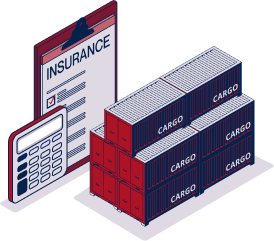
Household goods shipping
Moving valuables between Vietnam and Finland? Rest assured, our personal effects shipping service handles your items such as antique furniture or fragile art pieces with absolute care. Imagine this: your grandparents' crockery, packed and transported with such precision, it arrives in Helsinki just as it left Ho Chi Minh. For the flexibility and certainty you need during your move, let our expert team guide you. Dive into deeper details on our dedicated page: Shipping Personal Belongings
Procurement in Thailand
Looking to manufacture goods in Asia or East Europe? FNM Vietnam's Supplier Management service garners the perfect supplier for your business, sweeping clear language barriers, and guiding you throughout the entire procurement process. Say goodbye to sourcing headaches, and hello to a streamlined global supply chain. More info on our dedicated page: Sourcing services

Quality Control
Quick and effective quality checks are crucial when shipping goods from Vietnam to Finland. Our Quality Control service helps avoid unseen dilemmas (like transit damage or failed compliance) by thoroughly inspecting the goods during manufacturing. Take, for instance, a global toy brand, ensuring its products abide by Finland's strict safety standards prior to shipping. More info on our dedicated page: Quality Inspection

Conformité des produits aux normes
Ensuring your goods meet the destination’s regulatory guidelines is vital, and missteps can be costly. That’s where our Product Compliance Services come in handy. Through intensive laboratory testing, we certify your products' compliance, saving you from undesired hassles and potential legal issues. Just imagine shipping toys, only to find they don't meet safety standards at the destination – frustrating and expensive! Our service alleviates this stress.
